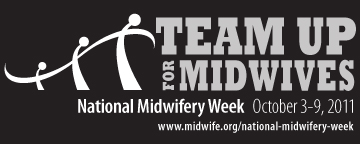For thousands of years, women have been giving birth with the help of midwives. Every year, more than 300,000 US women partner with midwives to navigate birth, puberty, menopause, and other normal life stages. In celebration of National Midwifery Week, I had a chance to talk with Jill Kocher, one the 24 certified nurse midwives on staff at HealthNet. She has been at HealthNet for about 1 ½ years and absolutely loves what she does!
Kay: Jill, what made you decide to become a nurse midwife?
Jill: It was truly a God-directed thing for me. I’ve always enjoyed caring for people. After high school, several things fell into place for me to go nursing school. During my last year, I had the chance to shadow a midwife for a week. It was really awesome to see the relationship she had built with those women. That experience stuck with me.
After I graduated, I worked as a medical/surgical nurse at a hospital for a short time before transferring to maternity services. I really enjoyed it, but I knew I wanted to help women not just when they’re in the hospital. I wanted to see them day in and day out — to build relationships and help guide them in making good decisions, while caring for themselves and their families. That’s why I went back to nursing school to become a certified nurse midwife. I wanted to be in a position to empower women.
Kay: Is midwifery care becoming more popular these days?
Jill: I think women are learning that pregnancy and childbirth are normal, healthy processes for which a woman’s body is well-designed. Yet each woman’s experience is unique. Some women are interested in water birth. Others prefer having a birth ball, shower, or rocking chair close by. And many simply want all of their relatives by their bedside. More and more mothers-to-be are having babies their way, with the help of a midwife who is there to do as much or as little as the woman wants.
Kay: Midwifery has been around for centuries, yet there are misperceptions about it. What ones do you encounter most often?
Jill: I wish the general public knew that nurse midwives do not only deliver babies at home. They also deliver babies at the hospital and in birth centers. Most people are surprised to find out I work at a health center and deliver babies at a hospital.
Kay: What other misperceptions come to mind?
Jill: Midwifery care is a safe option for women, especially for those who want to be cared for by someone who views birth as a natural process.
CNMs are nurses first. I went through four years of training to become a nurse, then went back to school for extra training focused specifically on labor and delivery, before and after childbirth care and OB/GYN. We are certified by the American Midwifery Certification Board. At HealthNet, we are credentialed by the hospital and work side-by-side with OB/GYNs. We view things more naturally, but when we need to intervene for the health of the mom or baby, we will.
Kay: There’s been a lot of talk in the news about the national Caesarean section rate being on the uptick, and how that may not be the best thing. What are your thoughts about it?
Jill: In the 1960s, the national c-section rate was approximately 5%. These days, it hovers around 30%. I feel like we as midwives are helping to reverse that trend.
A woman’s due date is really just an estimation. In general, we wait until 10 days past the due date to induce labor. In most cases there needs to be a medical reason to induce sooner. When a woman goes into labor on her own, the labor usually goes more quickly and smoothly. Often times when you introduce medicines to speed up the process the woman’s body isn’t ready yet or the baby is not able to tolerate it well. Anytime you give the body the chance to do it on its own, it will go a lot better than trying to force it.
Kay: You are expecting your second baby soon. Did being a nurse midwife change your outlook on your own birth experience?
Jill: Absolutely! It really made me look at my own pregnancy and labor very differently. I had my first child naturally. He was a big baby too — 9 lbs. 3 oz.! I like being able to share appropriately from my personal experience to encourage moms who are considering natural childbirth.
——————————————————————————————————————————————————————————–

HealthNet Midwifery Services is the largest midwifery practice in the state, assisting in the birth of more than 2,400 babies each year at IU Health Methodist. The program’s 24 nurse midwives work with the OB/GYN physicians on staff to provide prenatal care, postpartum care, well-woman care, family planning and more for women at HealthNet’s six community health centers and one OB/GYN care center. The program celebrates its 20th year this year.








[...] What Midwives wish you knew about them (blog.indyhealthnet.org) This entry was posted in Children's Health, Women's Health and tagged birth center, childbirth, Home birth by Erin Denil. Bookmark the permalink. [...]